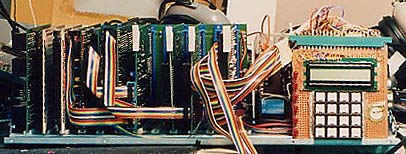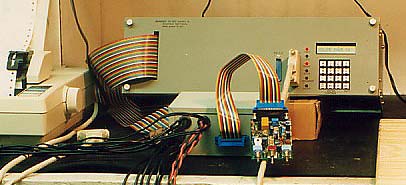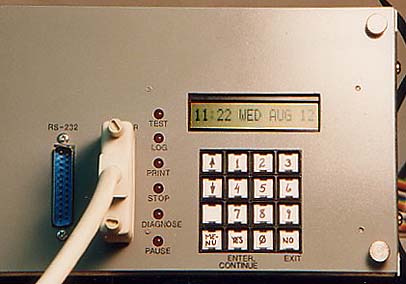Replying to various things without re-quoting:
Here's a stackable dual-row header:
http://www.digikey.com/product-detail/e ... ND/1111810Although the price is kind of high, note that in spite of the picture, the part is actually a strip of 100 pins, and you can cut the lengths you need from it, which is what I do. There doesn't need to be any waste, because shorter leftovers can be put end to end to make longer connectors. I think the dual-row headers are more common, because of mating IDCs that clamp onto ribbon cables with wires at .050" centers.
Here's a Vector RE96MWR right-angle (for the cards in a cage) 96-pin (3x32) DIN 3-row wire-wrap male connector, Mouser stock number 574-RE96MWR:
http://www.mouser.com/ProductDetail/Vec ... VFVA%3d%3dThese are most commonly used for VME bus, and industrial card-cage computer bus. I bought a few of these connectors for cards for the workbench computer I'm building in a half-rack-width 3U Eurocard cage shown at
viewtopic.php?p=45607#p45607 . I took the pictures before I had made much progress on it. There's no picture of the connector on the Mouser page, but click on the .pdf link there to get the datasheet which has excellent drawings of it. The mating female that I use in the backplane is the Vector RE96FW which I got a tube of for pennies on the dollar at an electronics swap meet. Its Mouser stock number is 574-RE96FW, and the link is:
http://www.mouser.com/ProductDetail/Vec ... GBlsgks%3dIt is shown as "Style 2" in the top row of pictures in the same .pdf datasheet.
Here are various card cages. I realize you're interested in something much smaller; but there no reason you can't implement the idea with much smaller dimensions. Imagine a card cage so small that the cards are SD-card size!



PC/104 aluminum-railed card cage (90x96m cards, no backplane):


This is the automated test equipment I built at my last place of work, about 1991 and using STC bus, shown in my project pages on this site, first with the top and front panel off, showing the cards in position and plugged into the backplane, and then all buttoned up and being used to test a board:










